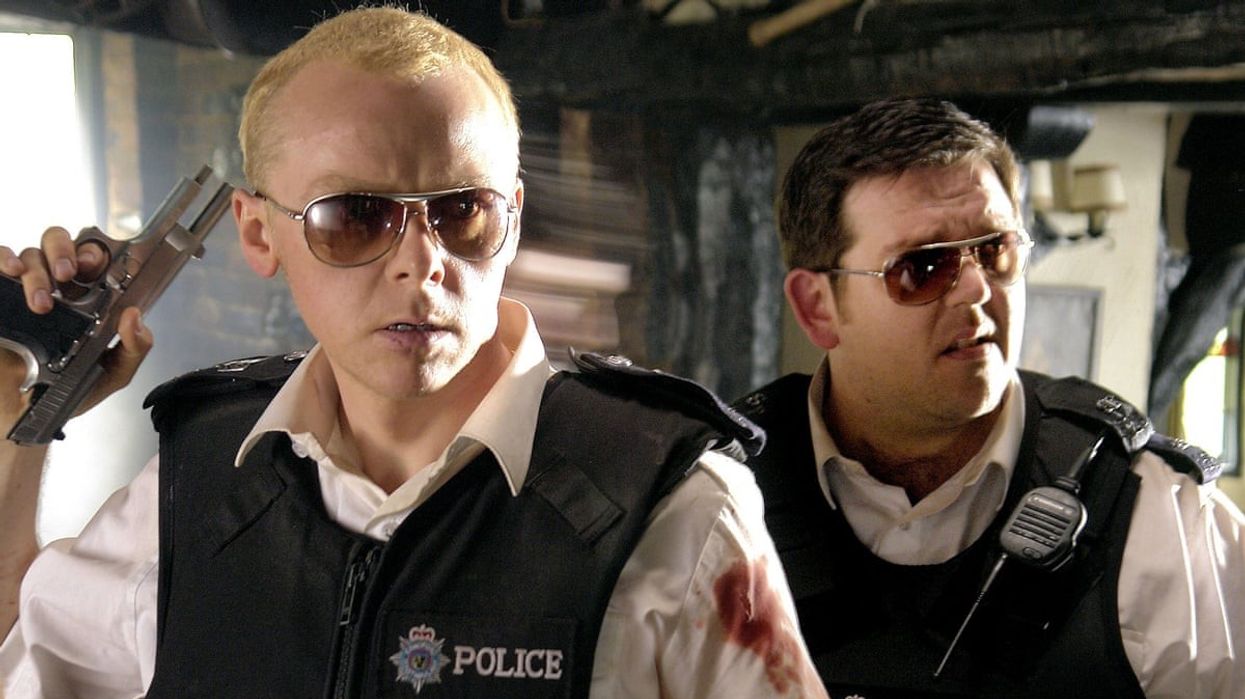
Edgar Wright is one of my favorite directors. His films always have a lot of laughs, heart, and visual interest. It seems like no one sees the medium as he does, and that's what sets him apart from other directors.
Wright has a specific tone and style. His auteur tendencies are often imitated but seldom replicated. Even though he is a singular force, there are lots of lessons we can learn from his scripts and styles.
One of my favorites of his films is Hot Fuzz. It's a reimagining of a buddy cop movie mixed with an Agatha Christie-style murder mystery. Wright wrote Hot Fuzz with Simon Pegg, who also stars in the film. Their collaboration, along with Nick Frost's acting, really brings this world to life.
There are so many genre, tone, and general writing lessons located within the movie that I wanted to share the screenplay with all of you and talk about the things it taught me.
Read and download the Hot Fuzz screenplay here!
Three Lessons from the Hot Fuzz Screenplay
1. Know your genre
Like I said in the opening, this movie is a genre mashup for the ages. It takes the action movie, thriller, and comedy and spins them all into one.
What it does perfectly is take all the tropes from these genres and use them to make the different story beats feel unique. You have the cops from an action movie investigating a murder in a tiny little hamlet. So you run into characters that fit both. As clues come in, we get the thriller aspect, since more bodies are discovered. Of course, all these juxtapositions add to the comedy.
This is a skilled way to tell a story. So what can you take from it? Know the genre you're working in and the tropes that people expect. If you can subvert those tropes, great! If not, why not try to mix in another genre to make both feel fresher?
2. Characters must arc
No matter what kind of story you're writing, your characters have to arc. We talked about the various genres in this movie, and you could see a world where nothing happens to these characters. But Wright makes this movie a classic by making sure everyone in it learns a lesson and becomes someone different at the end, even if it happens in a few goofy ways.
No matter the genre, your characters have to arc. So make sure they go through something that changes them or their perspective on society.
3. Balance your tone
What kind of tone do you have in the story? What are the rules of the world? Are they consistent?
The tone is the mood or attitude the story projects. It can be lively, goofy, serious, or dramatic. The tone is usually dictated by the genre. But your tone also can allow the audience to buy into the events of the story.
The comedy inside Hot Fuzz allows us to believe in the insane fights, wild world, and villainous antagonists this movie presents. It might seem goofy or unrealistic overall, but setting the tone from the start means we will buy into even the most ludicrous things that happen in the story.
How can you set your tone? Use the opening pages to make sure the audience understands the genre and the world you have built. Make sure you do this and balance the tone so people know what to expect from the coming pages.
Summing Up Lessons from the Hot Fuzz Screenplay
Hopefully, all of these lessons and the Hot Fuzz script PDF will open the world of your next screenplay. Writing is not easy, but the best way to learn is to read professional scripts and take lessons where you can.
Have any of you read Hot Fuzz before? What are some things you picked up from Wright and Pegg's writing style?
Let me know in the comments.











